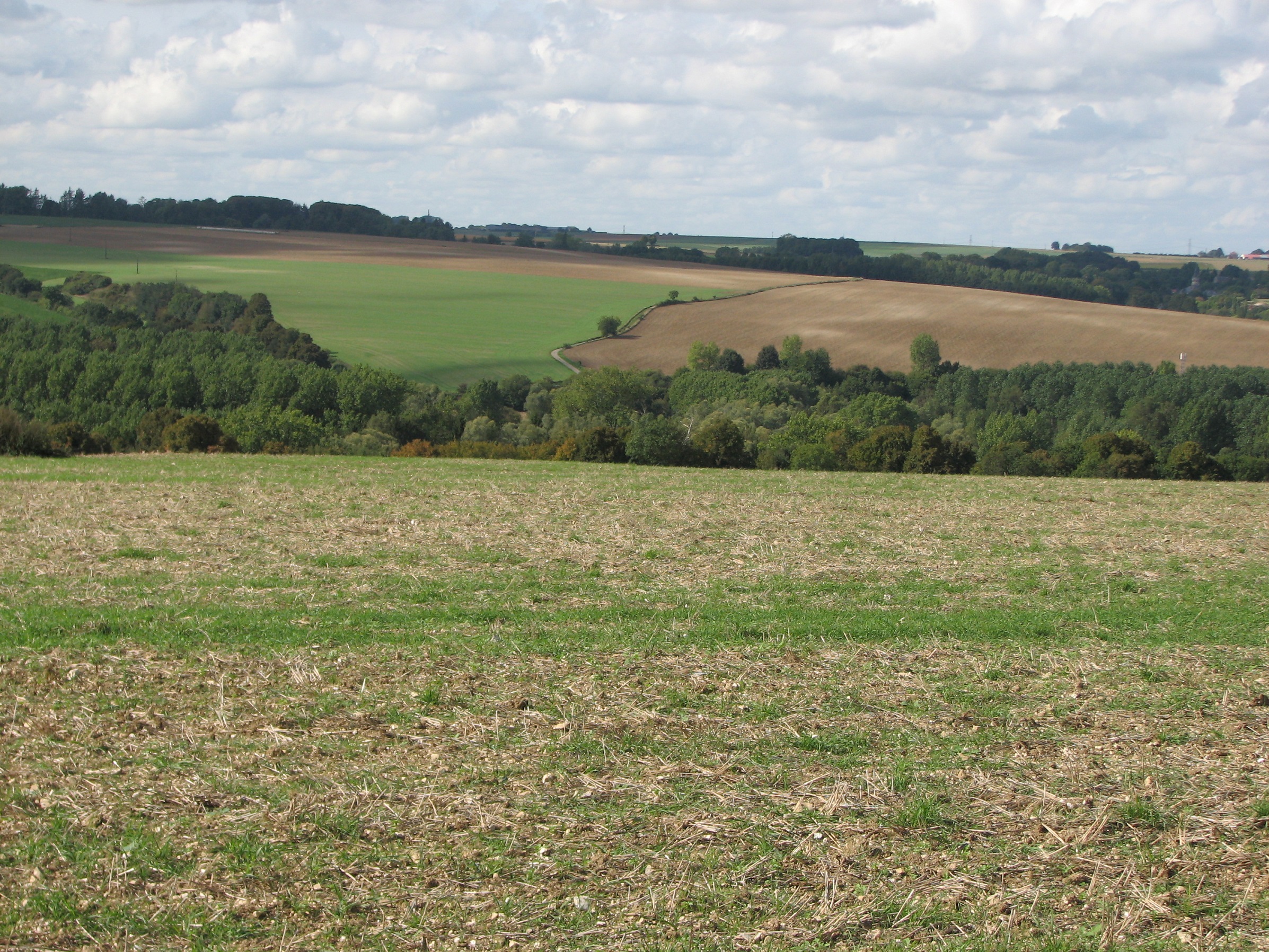Arthur Cousins (1890 - 1916)
Arthur served in the Machine Gun Corps (nicknamed “The Suicide Club”, due to its high casualty rates) on the Western Front. He was killed in action in during the Battle of the Somme, in September 1916.
- 26
- Died in the Great War
- 51.981366, 1.030997
Details
| Name: | Arthur Charles Cousins |
| Service: | British Army |
| Unit: | 116th Machine Gun Company, Machine Gun Corps |
| Regimental Number: | 13262 |
| Rank: | Private |
| Date of Death: | 3rd September 1916 |
| Age: | 26 |
| Commemorated: | Face C of Pier 12 of the Thiepval Memorial, near Albert, France |
Family Background and Early Life
Arthur Cousins was born in East Bergholt on 14th February 1890, the eldest child of Alfred Cousins and his wife Esther.
Alfred Cousins – originally from Stoke by Nayland – was a Farm Labourer at the time of his eldest son’s birth, though he became a Shepherd soon afterwards. Alfred had married Esther Double from Raydon, in the late spring of 1890, and their marriage would produce 9 children.
By April of 1891, the family were living in Great Holland, though within 9 months they had moved to nearby Kirby. A further family move took place in the next 2 years when they moved to Bradwell.
The Cousins moved from Bradwell to Southminster sometime between 1901 and 1904 and remained living there for many years.
The April 1911 Census shows Arthur’s occupation as a Farm Labourer, and also that he and his sister were staying with their Aunt and Uncle on Mill Road, in Myland, Colchester. Whether Arthur was living there at this time, or just visiting, is not known.
We know that Arthur returned to live in the village of his birth when he was adult. He started working at the Xylonite Factory at Cattawade in 1912, so it seems likely that this was the time when he moved to East Bergholt. Sadly, no documentary evidence appears to still exist to confirm exactly where in the village Arthur lived. 1 Arthur may possibly have been living with his paternal grandparents Charles and Susannah, who resided at Ivy House on Cutler’s Lane in 1911. Prior to that, they had previously lived for a number of years at Haybarn, Flatford.
Arthur was employed initially in the Polishing shop at the factory, but later moved to the Slicing shop.
Joins the Army
At the end of October or start of November 1915, Arthur volunteered to join the Suffolk Regiment, seemingly under the Group Scheme. 2 Often called the Derby Scheme, after Lord Derby the Director-General of Recruiting. This was effectively a last ditch attempt to increase recruitment before the government was forced to resort to conscription. Under the terms of the Scheme, a man could choose either, to formally enlist and join the Army Reserve, but then go back to his civilian occupation until he was required, or he could agree to immediate service. Arthur chose to be mobilised immediately.
In February 1916, Arthur transferred to the newly formed Machine Gun Corps, possibly as a volunteer. 3 The Machine Gun Corps had been formed in October 1915, in an effort to improve the British Army’s effective use of this weapon. Due to their effectiveness as a killing machine, machine guns (and their teams) became a prime target for the enemy.
Arthur underwent his training at Belton Park, near Grantham in Lincolnshire, where the Corps had established its U.K. training centre. There, the men learnt the effective use of the Vickers Machine Gun. 4 The Vickers Machine Gun Mark I was the British Army’s primary machine gun throughout the Great War, and the Second World War. Fed by a cloth belt containing 250 rounds, and firing .303 inch ammunition at rate of 500 rounds a minute, it had an effective range of just over 2,000 yards, but over 4,000 yards with indirect fire.
The Vickers Machine Gun was operated by a Team – usually consisting of 6 to 8 men – one to carry the gun, one to carry the tripod and the remainder to carry tins of ammunition. All of these could operate the gun, if required. 5 In the case of 116th Machine Gun Company in 1916, at full strength there were 4 guns to a section, and 4 sections to the Company.
Arthur served in France with the 116th Machine Gun Company, so it seems most likely that was sent over there them with them when they first arrived in that theatre in May 1916. They were attached to the 116th Infantry Brigade, a part of the 39th Division.
Within 12 days of disembarking in France the Company were in the trenches in the Festubert sector, east of Bethune. Like all units, Machine Gun Companies did not remain in the firing-line all of the time, they rotated – usually (at this time) every six or seven days – with other Companies. Until mid-August, when the 116th were in the line, it was in the general area. During the second half of August the Company marched south in stages, to where they were to join those forces engaged in the Allied offensive now known as the Battle of the Somme.
Battle of the Somme
The Battle had been in progress for two months, when Arthur and the 116th Machine Gun Company arrived in late August.
On 3rd September 1916, the British launched an attack from that section of the line astride the River Ancre, in front of the village of Hamel. This had been the scene of attacks on 1st July – the first day of the Battle – which had been beaten back with heavy losses. Since then, this particular part of the Somme front had been comparatively quiet.
The attack on the north side of the river would be made by 39th Division, with the 116th Infantry Brigade occupying the right section of the battle front.
Other men taking part in the same attack included William Gardner (whose parents lived at Highlands Cottages in East Bergholt) and Alfred Cousins, one of Arthur’s brothers. 6 William Gardner, of the 17th Sherwood Foresters was killed in action during the attack of 3rd September 1916, aged 36. He has no known grave, and is commemorated on the Thiepval Memorial, as well as the East Bergholt War Memorial.
Rifleman Alfred James Cousins, of the 17th Battalion of the King’s Royal Rifle Corps, died of wounds on 3rd September 1916, aged 20. He has no known grave, and is commemorated on the Thiepval Memorial, as well as the Southminster War Memorial.
The attack was launched at 5.10 am. On the far right of the Division’s attack some of the infantry managed to gain a foothold in the German’s second line. They were supported by the 116th Machine Gun Company – the Company’s War Diary describes what happened:
“At zero (5.10 a.m.) on Sept 3 the attack was launched on the enemy’s trenches immediately north of the River Ancre. The battle lasted till 5 p.m. by which time most of our troops had regained our trenches, being unable to hold the captured positions, the company lost heavily, the total casualties amounting to 38. Many of whom were reported missing, amongst them being the two section officers 2/Lt. H.V. Higgings and 2/Lt. G.R. Greene.
Three guns were lost out of No. 2 Section. One gun was blown up in the German front line, and the other two penetrated to the German third line with 2/Lt. Greene in command, and neither the teams or guns returning, it is supposed that they were cut off.
The guns of No. 1 Section did some excellent work, gaining the German second line, three of the guns were mounted and successfully repelled several counter-attacks, finally withdrawing at 7.10 p.m. after being in the enemy trenches for 14 hours, under Privates Worthington and Humphries, greatly assisted by Privates Boulter and Neville.” 7 Taken from the War Diary of the 116th Machine Gun Company for September 1916 (National Archives WO 95/ 2583).
The attack was a failure. Nothing had been achieved and the 39th Division suffered over 2,800 casualties, including 1,200 men killed or missing. Arthur was one of those who was missing.
The Army made various enquiries to establish Arthur’s fate, including to see if he might have been captured by the Germans. After the lines of investigation had been exhausted, and with no trace, Arthur was declared dead “on or since” 3rd September 1916, he was 26 years old.
Arthur has no known grave and is officially commemorated on the Thiepval Memorial. This Memorial to the Missing of the Somme contains the names of over 72,000 officers and men of the United Kingdom and South African forces who died in the Somme sector before 20th March 1918, and have no known grave. 8 Arthur is also commemorated on the East Bergholt War Memorial, the Southminster War Memorial and the British Xylonite Brantham Factory War Memorials.
Copyright © Mark Ashmore, 2024
- 26
- Died in the Great War
- 51.981366, 1.030997




